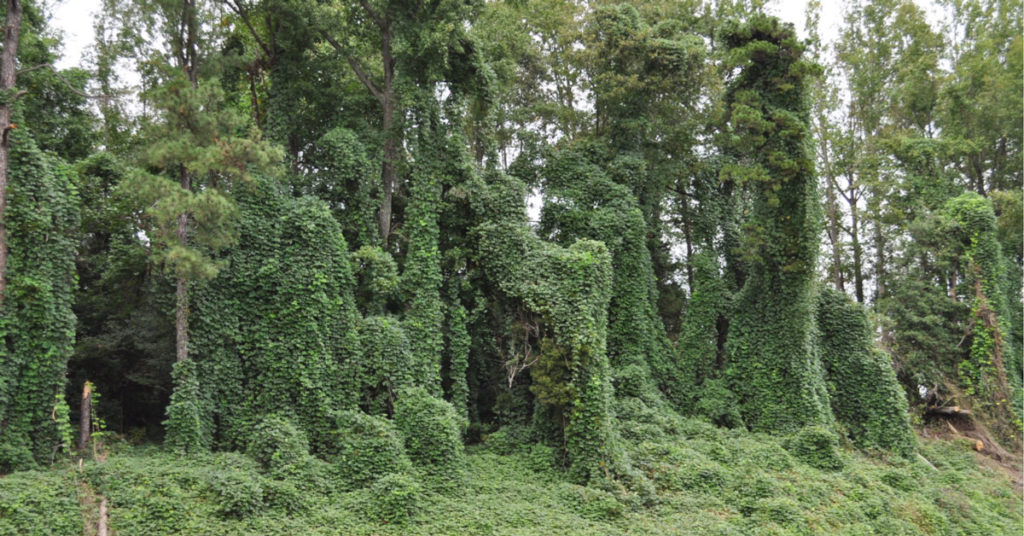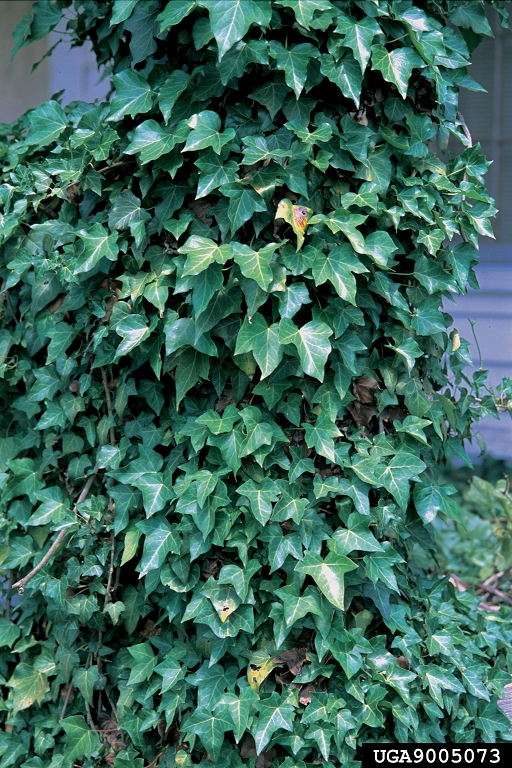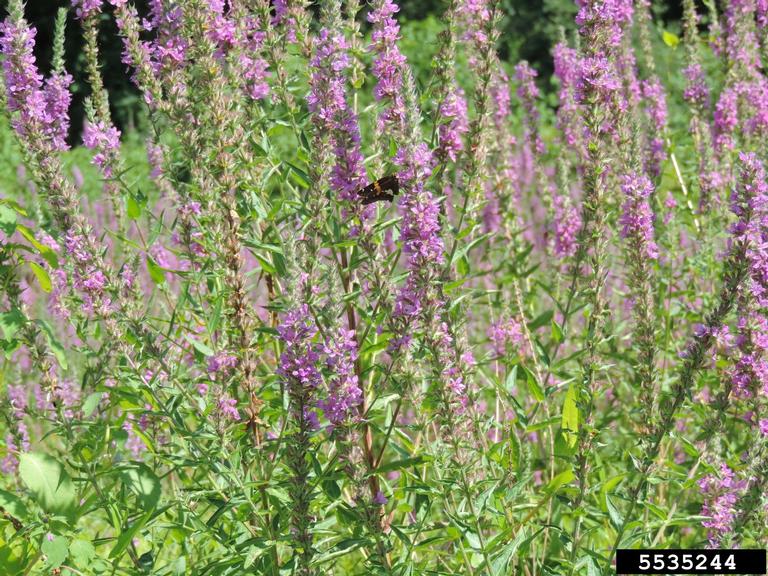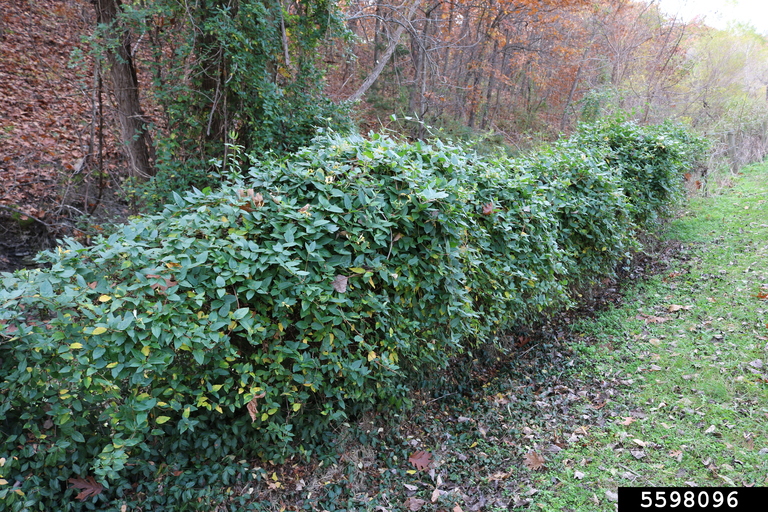
Invasive species can cause damage to both the surrounding ecosystem and to your property as well. In this article, we’ll talk about how invasive species can negatively impact your property, your lifestyle, and the larger ecosystem in which you live.
1. They can grow out of control
One of the main concerns with invasive species is that they are introduced into an environment where they might not have any natural competitors. These plants can outcompete native species for resources like sunlight, nutrients, and water, and don’t face the pressures of biological limits, such as predation by certain animals or insects. Ultimately, what this means is that invasive species can grow out of control and completely overrun your property. This issue is compounded by the fact that invasive species usually grow very quickly and very aggressively, meaning they cover a lot of ground fast and can become very difficult to remove. Sometimes, these plants can grow faster than you’re able to remove them. In addition, if invasive species aren’t treated properly or are not removed thoroughly, they can reappear even after you thought you removed them.

2. They can spread beyond your property
Often, the issue of invasive species taking over a property can be more of an issue for landowners who have more acreage since management or removal is on a much larger scale and takes more time and resources. Invasive species in a smaller suburban yard are more of a threat to the surrounding ecosystem, however. Invasive plants in your yard aren’t necessarily contained within your yard, as their seeds can be spread by birds or wind. So while a few invasive plants on your property may seem relatively harmless, they could actually spread and become a major issue for landowners elsewhere, as well as the ecosystem as a whole.
3. Management takes time
Do you ever feel like you’re giving up your weekends in the summer to do endless yard work? Many homeowners notice that they spend a significant amount of time in their yard trimming, pulling or cutting plants that are difficult to manage. While many plants do require some degree of maintenance to achieve a desired aesthetic, some invasive species are especially aggressive and demand a lot more time and effort to keep them under control. If you’re not removing the invasive species in your yard permanently, which often requires more than one application of pesticides or multiple seasons of physical removal, you could be costing yourself some much-anticipated free time.
4. Management costs money
Managing invasive species in your yard doesn’t just cost you your time, it can cost you money, too. Routine yard care can cost upwards of $100 per visit by professional landscaping companies. This price estimate does not include potential additional costs due to overgrowth or excessive height for yards that have not been maintained. In addition, some professional landscaping companies don’t properly handle invasive species and might pull a vine down or mow over them without actually removing the roots. Even if you don’t use a yard care service, invasive plants could drastically increase your maintenance costs because they require extra resources to manage, like tools, fuel or herbicides. On the other hand, if you were to ignore the demand and let the yard become overgrown, you could be facing indirect additional costs due to HOA or city fines for appearance standards. These fees can begin small but often increase to high amounts after repeated offenses. Invasive species can also cause other plants to die, causing a great loss of investment in your yard.
5. Biodiversity could diminish
Invasive species that grow out of control aren’t just a concern in terms of management, they’re also a concern to the natural biodiversity on your property. Invasive species are not suited to the environment to which they’ve been introduced. Native plants and animals have co-evolved over thousands of years while invasive species do not have these communal relationships and offer little value within the native ecosystem. This lack of biodiversity has impacts that extend well beyond your yard, affecting the entire ecosystem around you.

6. The beauty of your yard might suffer
Because invasive species diminish biodiversity, the beauty of your yard could suffer as a consequence. Invasive species could crowd out your native plants and create a very monotonous landscape that is dominated by only a few species. The aggressiveness of invasives could also cause your native trees and shrubs to become covered in vines or groundcovers. Not to mention, if your site is dominated by plants that don’t support the needs of native wildlife, you might lose wildlife diversity, and the creatures you enjoy seeing out your window, like bees, butterflies and birds, could disappear.

One of the most important things to remember with invasive species is that the longer you ignore them, the more difficult it will become to remove them. You could spend unnecessary hours and dollars just keeping your invasive species under control, or you could wait so long to do something about them that it becomes more of a burden than it needed to be. Your safest bet is to get rid of invasive species as soon as you notice them and keep monitoring your property so that you can identify them as soon as they pop up. This will save you time and money in the long run.
All of this talk about the expense and hassle of managing or removing invasive species can feel overwhelming. But don’t lose hope! If you’re ready to get rid of your invasives and keep them away for good, read the article, “How You Can Get Rid Of Invasive Species On Your Property”, to learn what you can do and what resources are available to help restore your property.
If you’re interested in learning more about invasive species and why they’re a concern for property owners, keep reading here: https://www.invasive.org/101/index.cfm
